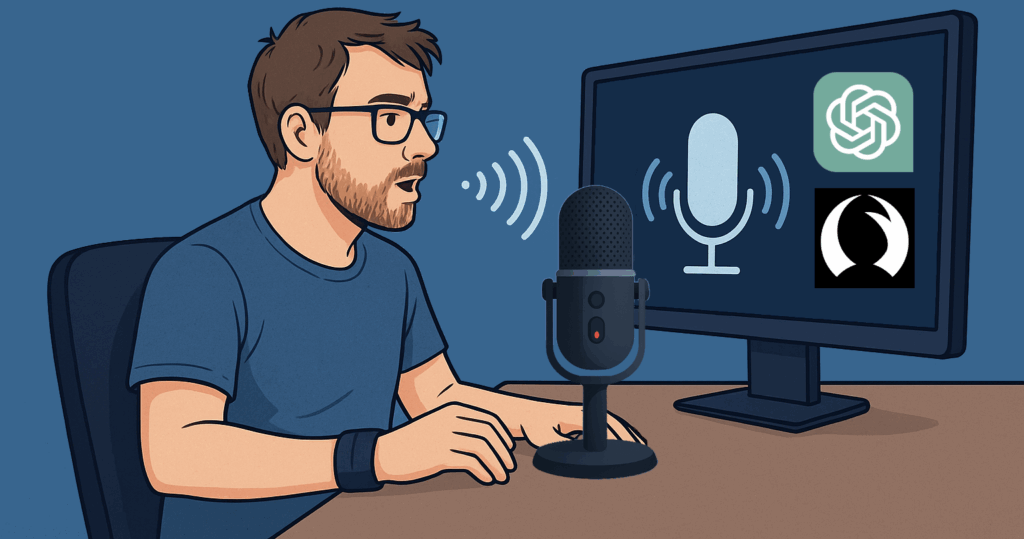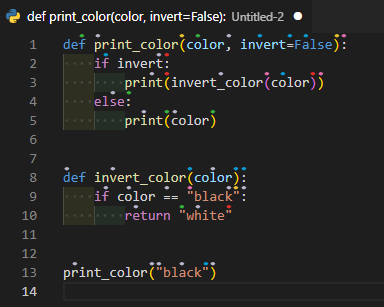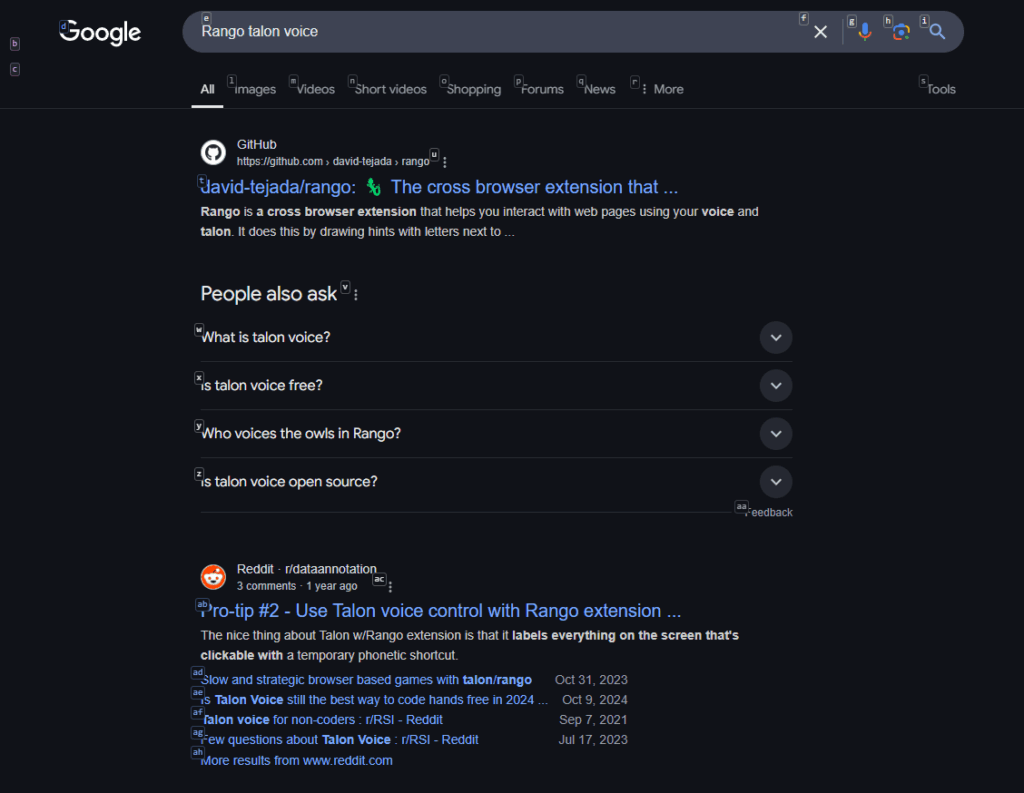
Living with repetitive strain injury (RSI) and chronic pain has been an ongoing challenge, turning even simple tasks—like typing or using a mouse—into sources of discomfort and, at times, intense pain. For someone whose career revolves around technology and communication, this has posed significant obstacles.
My journey with chronic pain began back in the UK, shortly after earning my bachelor’s degree in Physics with Astronomy in 2015. I first noticed pain, tingling, and numbness in my wrists, which persisted throughout my PhD in Astronomy and my postdoctoral studies. Over time, these symptoms worsened, spreading to my elbows and eventually escalating into a debilitating injury during the height of the COVID-19 pandemic in 2021. At that time, I was engaged in a high-intensity project, and despite the escalating pain, I could only afford to take a couple of weeks off work due to the work-experience demands of my Canadian immigration application. As the condition progressed, the pain extended throughout my upper body, including my neck, eventually developing into chronic pain that continues to affect me today.
To cope, I had to give up my hobbies and passion projects, which had been my last sources of refuge during the pandemic. The relentless pain infiltrated every aspect of my life, disrupting my sleep, impacting my mood, and forcing me to alter my approach to both work and daily activities. I had reached the lowest point in my life, feeling isolated, helpless, and uncertain about my future.
A World Transformed by Talon Voice
In the midst of this struggle, I began searching for alternative ways to interact with my computer. This search led me to voice recognition technology, which has since become one of the most transformative tools in my accessibility journey. Initially, I experimented with Windows Voice Recognition, but its unreliability made it nearly impossible to achieve meaningful work, leaving me frustrated and dejected. While other tools like Dragon were available, they primarily served as word dictation programs—not designed for coding or offering full, hands-free control over a computer.
Everything changed when a friend of my wife recommended Talon Voice. Talon isn’t just a voice recognition tool; it’s a programmable, extensible platform. At the heart of Talon is the ability to write custom scripts that translate spoken commands into precise computer actions. Voice commands are defined in `.talon` files and can be linked to Python scripts, allowing me to build workflows perfectly suited to my needs—whether that’s automating repetitive tasks, navigating complex software, or writing code without ever touching a keyboard. This flexibility opened up an entirely new way of interacting with my computer, tailored exactly to my workflows and preferences.
With Talon, I can write code, manage files, and control applications with seamless voice commands. It’s not just about reducing the physical strain of typing—it’s about restoring independence. The combination of voice control and Python scripting has enabled me to create a computing environment that works for me, rather than forcing my body to adapt to traditional tools. I cannot fully articulate the profound impact Talon has had on my life; it has genuinely facilitated my healing and allowed me to continue pursuing my passion for technology.
Community-Driven Development
What makes Talon truly special is its vibrant, open-source community. Users and developers collaboratively contribute to extensive repositories of scripts and configurations, continually enhancing Talon’s functionality. This collective effort ensures that Talon evolves to meet diverse user needs, fostering an environment of shared learning and support To help users get started quickly, the community GitHub repository offers a comprehensive suite of ready-made commands. This allows users to begin using Talon right away while also providing a solid foundation for further customization to meet their specific needs. The Talon community also created a wiki that serves as a valuable resource for users, offering documentation, tutorials, and troubleshooting tips. These people are truly amazing, and I am incredibly grateful for their contributions.
Cursorless: Revolutionizing Voice Coding
As my use of Talon grew, so did my need for specialized tools to support my coding work. Integrating Talon with tools like Cursorless has been truly transformative, thanks to its creator, Pokey Rule. Cursorless enhances code navigation and editing within your code editor by allowing voice commands to manipulate code structures directly. This integration reduces the need for repetitive, strain-inducing actions, enabling a more fluid and ergonomic coding experience. By decorating code elements with unique identifiers, Cursorless allows for precise, voice-driven code manipulation, significantly improving efficiency and reducing physical strain.
Check out this video to see Cursorless in action with Talon Voice.

Rango: Improving Browser Interaction through Voice Commands
Beyond coding, navigating the web efficiently is just as important. The [Rango](https://rango.click/) browser extension, developed by David Tejada, significantly enhances this experience by enabling seamless voice-controlled browsing. Rango is designed to work harmoniously with Talon Voice, allowing users to interact with web pages using voice commands. It overlays hints—small labels with letters—next to interactive elements like links and buttons. By vocalizing the corresponding letters, users can click, hover, copy, or display link addresses without manual input. This functionality reduces the need for repetitive physical actions, aligning with the goal of minimizing strain.

AI Tools Repository: Boosting Productivity with LLMs
To further streamline my workflow, I also rely on the talon-ai-tools repository, developed by Colton Loftus, which integrates large language models and AI functionalities directly into the Talon. This integration facilitates tasks such as text editing, code generation, and error correction through voice commands, further minimizing physical interaction with input devices. By leveraging AI, users can automate complex workflows and enhance their productivity without compromising their health, allowing me to streamline content creation, research, and automation, reducing the cognitive and physical load required to accomplish daily tasks. This synergy has been instrumental in enabling me to maintain productivity despite chronic pain.
Check out this video for a demonstration of AI-Tools in action.
Chat Interfaces for Idea Generation
While Talon Voice alleviates the physical toll of computing, AI chat interfaces have become an invaluable asset in my workflow. I utilize text-based AI models to brainstorm, refine ideas, and structure my thoughts efficiently. The conversational nature of these models enables me to develop outlines, expand on key concepts, and troubleshoot problems with minimal physical effort.
This is particularly crucial during flare-ups of my chronic pain, when even speaking can be exhausting. In those moments, I can provide a few keywords or a rough outline, and the AI helps transform my ideas into coherent, polished text. This isn’t merely about convenience—it’s about empowerment. It ensures that my voice remains heard, even when my body tries to hold me back.
Beyond content creation, these models assist with research, summarizing complex documents, and automating repetitive tasks. The cognitive load they alleviate is just as significant as the physical relief, enabling me to focus on what truly matters: creativity, problem-solving, and innovation. The interactive nature of AI chat tools allows me to explore different angles on a topic, ask follow-up questions, and receive instant feedback, making them an indispensable asset in maintaining productivity and creativity.
Looking Ahead
My experience is just one example of how technology can make the world more accessible. The same tools that help me manage RSI and chronic pain are transforming lives for people with a wide range of disabilities. Voice recognition empowers those with mobility impairments, large language models support individuals with learning disabilities or language barriers, and other AI-driven tools continue to bridge gaps that once seemed insurmountable.
Much of this innovation—like Talon Voice—comes from small, dedicated communities, many of whom live with chronic pain and disabilities. Their firsthand experiences drive solutions that meet real-world needs, but sustaining these projects requires meaningful support. Industry backing is critical to ensure these tools continue to grow, evolve, and remain available. As the tech industry expands, so does the demand for long hours at the computer, putting many workers at risk of repetitive strain injuries and chronic conditions. Without a serious commitment to accessibility, we risk stagnation in innovation and a growing epidemic of workplace injuries. Prioritizing accessible design—especially hands-free tools—is essential not only for those already impacted by disability but also to protect the long-term health of the broader workforce. Accessibility isn’t optional; it’s the foundation of sustainable, inclusive technological progress.
For me, AI and voice recognition have been more than just conveniences—they’ve been lifelines. These tools have helped me regain control over my work and daily life, despite physical limitations. At its core, technology is about people—enhancing lives, breaking down barriers, and creating opportunities where they once seemed impossible. Thanks to these advancements, I can work longer without worsening my condition, use a mouse and keyboard in moderation, and even reconnect with hobbies and passion projects I once had to give up—moments that felt out of reach at the height of my pain.
Though my journey with RSI and chronic pain continues, I’m deeply grateful for the tools that have helped me reclaim parts of my life. As AI and accessibility technologies evolve, I’m optimistic about a future where even more people can overcome challenges and thrive. If you’re struggling with similar issues, I encourage you to explore Talon Voice and join the supportive community on Slack — feel free to reach out to me there! I’ve only scratched the surface of what Talon can do in this article, and I continue to discover new ways it improves my workflow and overall quality of life — words can’t really do it justice. Just remember: you are not alone, and there are tools and communities out there that can help you regain control over your work and well-being.
Take care of yourselves out there!
References
– Talon Voice Homepage: [https://talonvoice.com](https://talonvoice.com)
– Aegis Patreon: [https://www.patreon.com/lunixbochs](https://www.patreon.com/lunixbochs)
– Talon Community Repository: [https://github.com/talonhub/community](https://github.com/talonhub/community)
– Talon Wiki: [https://talon.wiki/](https://talon.wiki/)
– Talon Slack: [https://talonvoice.com/chat](https://talonvoice.com/chat)
– Cursorless Homepage: [https://www.cursorless.org/](https://www.cursorless.org/)
– Cursorless Talon Repository: [https://github.com/cursorless-dev/cursorless-talon](https://github.com/cursorless-dev/cursorless-talon)
– Cursorless Demo Video: [https://www.youtube.com/watch?v=5mAzHGM2M0k](https://www.youtube.com/watch?v=5mAzHGM2M0k)
– Pokey Rule Sponsor Page: [https://github.com/sponsors/pokey](https://github.com/sponsors/pokey)
– Rango Homepage: [https://rango.click/](https://rango.click/)
– Rango Talon Repository: [https://github.com/david-tejada/rango-talon](https://github.com/david-tejada/rango-talon)
– David Tejada Sponsor Page: [https://github.com/sponsors/david-tejada](https://github.com/sponsors/david-tejada)
– AI-Tools Repository: [https://github.com/C-Loftus/talon-ai-tools](https://github.com/C-Loftus/talon-ai-tools)
– AI-Tools Demo Video: [https://www.youtube.com/watch?v=FctiTs6D2tM](https://www.youtube.com/watch?v=FctiTs6D2tM)
– Colton Loftus Sponsor Page: [https://github.com/sponsors/C-Loftus](https://github.com/sponsors/C-Loftus)

Max Foxley-Marrable
Dr. Max Foxley-Marrable is a seasoned Data Engineer and Data Scientist with over eight years of experience transforming complex datasets into actionable insights that drive innovation and operational efficiency. Specializing in advanced data processing with Python, Apache Spark, Microsoft Azure, and Databricks, he has designed and deployed scalable lakehouse architectures, machine learning models, and cloud-based solutions for both industry and academia. Holding a PhD in Astronomy and Astrophysics, along with multiple professional certifications from Databricks and Microsoft, Dr. Foxley-Marrable is recognized for his ability to solve challenging technical problems, lead high-impact projects, and translate complex concepts into practical, business-aligned solutions. His work spans data engineering, cloud architecture, AI applications, and technical education, all underpinned by a passion for innovation, collaboration, and delivering measurable results.
